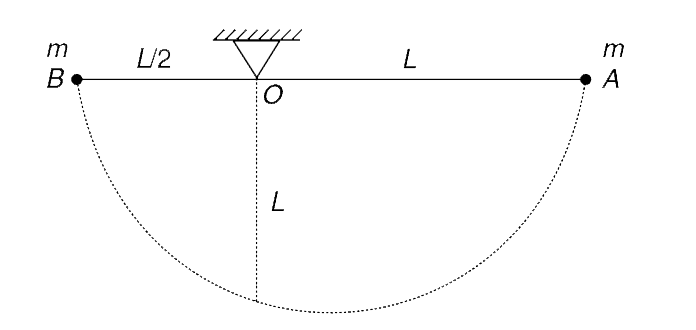There were 201 rows of spectators sitting in a hall. A magician releases laughing gas (N2O) from the front, and tear gas (mol. wt. 176) from the rear of the hall simultaneously. Which row of spectators from the front will have a tendency to smile and weep simultaneously?
The correct Answer is:134
Topper's Solved these Questions
Similar Questions
A classroom consists 10 equidistant bench. If nitrous oxide (laughing gas) is released from the first desk and tear gas (C6H11Obr) is released from last desk. Find out the desk from 1st at which students starts laughing and weeping simultaneously.
View SolutionA classroom consists 10 equidistant bench. If nitrous oxide (laughing gas) is released from the first desk and tear gas (C6H11Obr) is released from last desk. Find out the desk from 1st at which students starts laughing and weeping simultaneously.
View Solution
Knowledge Check
If 201 persons are sitting in a row AB and if we release NO2 (laughing gas) from the side A and tear gas (molecular weight - 176) from side B, then which person will have a tendency to laugh and weep simultaneously?
A151st from AB67th from AC134th from AD134th from BA teacher enters a classroom from front door while a student from back door. There are 13 equidistant rows of benches in the classroom. The teacher releases N2O, the laughing gas, from the first bench while the student releases the weeping gas (C6H11OBr) from the last bench. At which row will the students starts laughing and weeping simultaneously?
A7B10C9D8In the graph shown below A-B, B-C , C-D are parts of the carnot cycle operating on an ideal gas.Consider only the path from State 1 to State 2 . W denotes the work in the path. Equations and plots in the table have standard notations γ is the ratio of heat capacities at constant pressure and constant volume. The moles of the gas is 'n'.

For which of the following options dQrev(sys)T>0 and simultaneously dQirrev(sys)T>0 If taken irreversiblyA(I)(iv)(Q)B(IV)(i)(P)C(II)(iii)(R)DNone of these
A teacher enters a classroom from front door while a student from back door. There are 13 equidistant rows of benches in the classroom. The teacher releases N2O, the laughing gas, from the first bench while the student releases the weeping gas (C6H11OBr) from the last bench. At which row will the students starts laughing and weeping simultaneously?
View SolutionA cinema hall has equidistant rows 1m apart. The length of the cinema hall is 287m and it has 287 rows. From one side of the cinema hall, laughing gas (N2O) is released and from the other side, weeping gas (C6H5COCH2Cl) is released. In which rows, spectors will be laughing and weeping simultaneously?

View SolutionA cinema hall has equidistant rows 1m apart. The length of the cinema hall is 287m and it has 287 rows. From one side of the cinema hall, laughing gas (N2O) is released and from the other side, weeping gas (C6H5COCH2Cl) is released. In which rows, spectors will be laughing and weeping simultaneously?

View SolutionTwo gases NO and O2 were introduced at the two ends of a 1m long tube simultaneously ( tube of uniform cross-section) . At what distance from NO gas end , Brown fumes will be seen.
View SolutionTwo particles A and B, having same mass m are tied to a common point of suspension O. A is tied with the help of an inextensible string of length L and B is tied using an elastic string of unstretched length L2 . The two particles are released from horizontal positions as shown in figure. The particles have been released at a time gap so that both the string and the elastic cord become vertical simultaneously. It was observed that the length of the cord became equal to that of the string at this moment and the two particles collided. The particles got stuck together and their velocity just after the collision was observed to be √gL2.

(a) In which direction will the combined mass move immediately after collision – right or left ?
(b) Find tension in the string immediately after the collision.
View Solution
